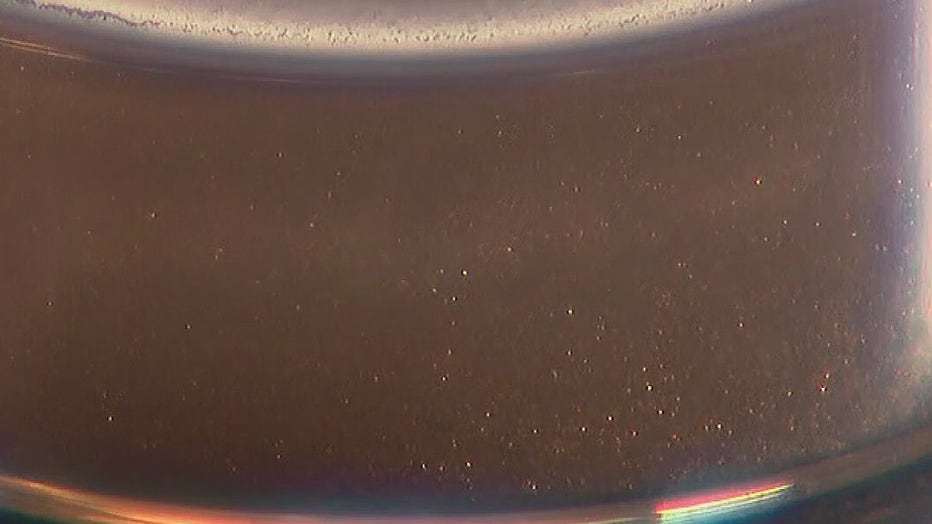UCF develops fadeproof paint

Creating plasmonic paint
The University of Central Florida patented a new kind of paint that does not fade, repels heat, and could substantially lower our power bills when it goes to market.
TAMPA - The University of Central Florida patented a new kind of paint that does not fade, repels heat, and could substantially lower our power bills when it goes to market.
It's called 'Plasmonic' paint and is based on the science of color in butterflies. Many of the most colorful butterfly wings contain no pigment. Instead, the wings have layers of tiny scales that let part of the visible light spectrum pass through and block out the rest. When we perceive color on the majority of butterfly wings, we're just seeing the parts of the visible spectrum that bounce off their translucent scales.
That gave UCF Nanoscience Professor Dr. Debashis Chanda the inspiration for developing plasmonic paint.
And that gave this color-obsessed professor at the University of Central Florida a bright idea.
"Since childhood I was fascinated by color. I grow coral at home. I have my colorful macaws at home, and so I was always driven by this curiosity that there is any way we can create artificial color," he said.
After years of experiments, he recreated the magic of butterfly wings in a bottle.
OTHER NEWS: UCF develops breakthrough in hypersonic propulsion
The water-like fluid is teeming with nanoparticles that resemble a type of glitter. Each brew contains different colors and concentrations made to absorb or reflect specific light waves as butterflies do.
And this can change our world!

"It’s extremely lightweight," Dr. Chanda said. "If you paint the roof of a building like that, it keeps the inside of the building much cooler because it does not absorb any infrared radiation."
Lab experiments show how it could significantly reduce our electric bills. Dr. Chanda's team painted the roof on one model house with plasmonic paint, and the other with conventional paint. They placed thermometers inside both models and put both under the same heat lamp. In the experiment FOX 13 observed, the model with traditional roof paint shot up to 94 degrees compared to 85 degrees for the one with plasmonic paint. UCF projects plasmonic paint could reduce temperatures up to 30 degrees depending on the circumstances.
"The structure of color actually reflects all the infrared radiation. So, it keeps the surface much cooler," said Dr. Chanda who noted this can reduce energy bills, and preserve energy in electric car batteries, extending their range.
Because conventional is much heavier, Chanda said switching to plasmonic paint would also reduce the weight of cars and jets, which would make them even more efficient.
For context, to paint a 747 jumbo jet, UCF estimates you'd only need around 3-pounds of plasmonic paint compared to more than a thousand pounds of traditional paint. And plasmonic paint never wears out.
"So it does not fade. The color structure in principle is supposed to stay forever," said Chanda, "Now there would be some natural wear and tear because of the rain, hailstorm and all of those things, but if you take all of those out, the color is not supposed to bleach."
Chanda noted it could reduce pollution in manufacturing, because plasmonic paint does not use the heavy metals that we often find in more common types of paint.
Chanda and UCF make their patented paint particles in an electron beam evaporator. They put small amounts of aluminum or sand inside and then shoot electrons into it until it evaporates into a gas. This produces the nanoparticles that absorb or bounce certain light waves. They mix the particles into a binder liquid which disperses the particles in a pattern to reflect specific colors of light.
The next big challenge is to make and sell this paint to consumers. You won't find it in paint or hardware stores yet. Building out the manufacturing process will take time and money, but Dr. Chanda says it will take off and as people discover the potential of plasmonic paint.

